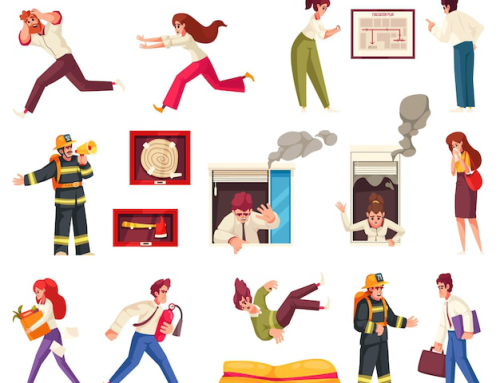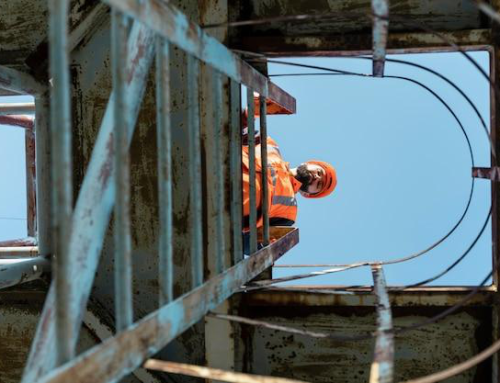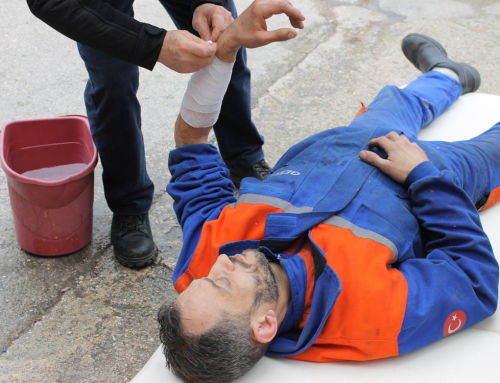In the workplace, lifting heavy objects is a common task, but if done incorrectly, it can lead to serious back injuries. Proper lifting techniques are essential to prevent such injuries and maintain a healthy back. In this comprehensive guide, we will delve into the importance of lifting techniques and provide practical guidance on assessing load weight, using proper body mechanics, and utilizing lifting aids when necessary. By mastering these techniques, individuals can protect their backs and reduce the risk of workplace injuries.
Importance of Lifting Techniques
Lifting heavy objects incorrectly can exert excessive strain on the muscles, ligaments, and discs of the spine, leading to acute or chronic back pain, muscle strains, and even herniated discs. Back injuries not only cause physical discomfort but also result in lost productivity, increased healthcare costs, and potential long-term disability.
By adopting proper lifting techniques, individuals can significantly reduce the risk of back injuries and create a safer work environment for themselves and their colleagues.
Utilizing Lifting Aids
In some cases, lifting aids may be necessary to safely move heavy objects. Lifting aids such as dollies, carts, hoists, or forklifts can help individuals transport heavy loads with minimal strain on the back.
Employers should provide access to appropriate lifting aids and ensure that employees receive training on their safe use to prevent injuries and accidents in the workplace.
Assessing Load Weight
Before attempting to lift an object, it is crucial to assess its weight and determine if it can be safely lifted without causing strain or injury.
To assess load weight effectively, individuals should consider factors such as the size, shape, and density of the object, as well as their physical capabilities. If the object is too heavy or awkward to lift safely, individuals should seek assistance or use lifting aids such as dollies, carts, or forklifts to move the object.
Team Lifting
Team lifting involves multiple individuals lifting and moving a heavy object together, distributing the weight evenly among them. This technique is particularly useful for lifting objects that are too heavy or bulky for one person to handle safely.
When employing team lifting, it is essential to communicate effectively with your lifting partners and coordinate your movements to avoid accidents or injuries. Occupational First Aid Level 1 training emphasizes the importance of teamwork and communication in preventing workplace injuries.
Squat Lifting
Squat lifting involves bending at the knees while keeping the back straight to lift objects from a lower position. This technique allows individuals to engage the powerful muscles of the legs, reducing strain on the back. When performing a squat lift, ensure that your feet are shoulder-width apart, and the weight is evenly distributed between both feet. Squat lifting is taught in Occupational First Aid Level 2 courses in Surrey to promote safe lifting practices and prevent back injuries in the workplace.
Golfer’s Lift
The golfer’s lift is a technique commonly used to pick up lightweight objects from the ground while minimizing strain on the back. To perform the golfer’s lift, stand on one leg while keeping the other leg extended behind you for balance. Then, hinge at the hips and lower your torso towards the ground, keeping the back straight. Use one hand to support your body weight while reaching down with the other hand to pick up the object.
This technique is often included in Occupational First Aid Level 3 Pro Renewal training in Surrey as a safe alternative for lifting light loads.
Pushing and Pulling
Pushing and pulling objects rather than lifting them can reduce strain on the back muscles and spine. When pushing an object, use your body weight to generate force and keep your back straight. When pulling, use a hand-over-hand technique while keeping your back straight and engaging your core muscles. Fall Protection training in Surrey emphasizes the importance of pushing and pulling techniques to prevent strain and injury during manual handling tasks.
Slide Lifting
Slide lifting involves sliding heavy objects along a smooth surface rather than lifting them vertically. This technique reduces the amount of force required to move the object and minimizes strain on the back.
When performing a sliding lift, ensure that the object is properly balanced and use your body weight to assist in sliding the object along the surface. Slide lifting techniques are commonly taught in confined space safety for monitor and entrant training in Vancouver to promote safe material handling practices in confined spaces.
One-Handed Lift
The one-handed lift is suitable for light to moderately heavy objects that can be safely lifted with one hand. To perform a one-handed lift, bend at the knees while keeping the back straight and grasp the object firmly with one hand. Use your legs to generate lifting force while keeping the object close to your body.
This technique is useful for tasks that require carrying objects while performing other tasks simultaneously, such as carrying tools or equipment. Occupational First Aid Level 1 training emphasizes proper lifting techniques to prevent strains and injuries in the workplace.
Overhead Lifting
Overhead lifting involves lifting objects above shoulder height, which requires additional strength and stability. When performing overhead lifts, ensure that the object is properly balanced and that you have a clear overhead space to avoid obstacles.
Use your legs to generate lifting force while keeping your back straight and engaging your core muscles.
Check out our forklift training courses in Surrey today!
Reasons Workers Experience Back Pain at Workplaces
Workers often experience back pain in the workplace due to various factors, ranging from poor ergonomics to repetitive tasks and heavy lifting. Understanding the reasons behind back pain is crucial for implementing effective preventive measures and promoting a safer work environment. Below are some key factors contributing to back pain in the workplace:
Poor Ergonomics
Inadequate workstation setups, such as improperly adjusted chairs or desks, can result in poor posture and increased stress on the spine. Prolonged sitting or standing in awkward positions can lead to muscle strain and discomfort in the back. Fall Protection in Surrey emphasizes the importance of ergonomic principles in reducing the risk of back pain and musculoskeletal disorders among workers.
Jobs that involve repetitive movements, such as lifting, bending, or twisting, can place excessive strain on the back muscles and ligaments over time. Repetitive tasks without sufficient rest or proper technique can lead to cumulative trauma injuries, including back pain.
Heavy Lifting
Lifting and moving heavy objects without proper lifting techniques can cause acute injuries and chronic back pain. Improper lifting, such as bending at the waist instead of the knees, can place tremendous pressure on the spine and surrounding muscles.
Poor Posture
Maintaining poor posture while sitting, standing, or lifting can contribute to back pain and discomfort. Slouching, hunching over, or arching the back incorrectly can strain the muscles and ligaments, leading to pain and stiffness.
Lack of Physical Fitness
Poor physical conditioning and weak core muscles can increase the risk of back pain and injuries in the workplace. Workers with inadequate strength and flexibility may struggle to perform job tasks that require physical exertion, leading to overexertion and strain on the back. Occupational First Aid Level 3 Pro in Surrey emphasizes the importance of regular exercise and conditioning to improve overall fitness and reduce the risk of musculoskeletal injuries, including back pain.
By addressing these factors and implementing preventive measures such as ergonomic improvements, proper lifting techniques, and employee training, organizations can effectively reduce the incidence of back pain and create a safer and healthier work environment for their employees.
Ready to prioritize safety in confined spaces? Contact Metro Safety Training today to enroll in our comprehensive safety training programs and certification courses in Surrey. With our expert instructors and hands-on approach to learning, you’ll gain the skills and confidence needed to master confined space safety techniques and protect yourself and your team. Call us now.










